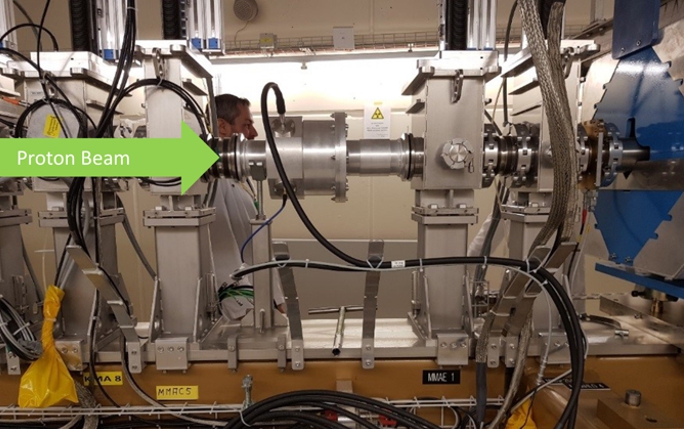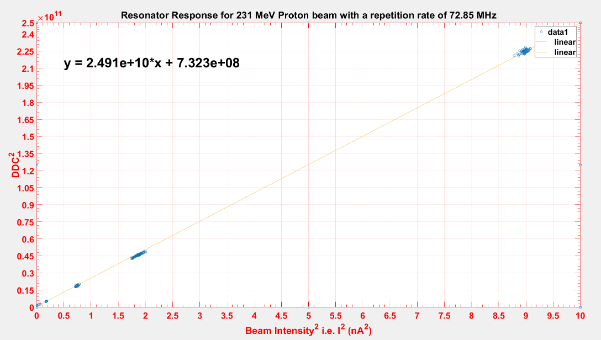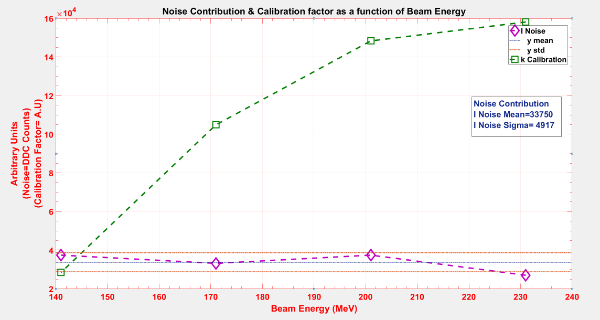First results presented from beam line characterization of the reentrant cavity resonator as an intensity monitor

Sudharsan Srinivasan and colleagues installed a Macor filled reentrant cavity resonator in the PROSCAN beamline at PSI in order to characterize it as a beam intensity monitor. Proton beams of multiple energies were chosen for the study and multiple intensities were swept for the given energies to measure the resonator response. The resonator was placed behind the MMAC5 ionization chamber as shown in Figure 1. The resonator response is plotted against the MMAC5 as it is the intensity that passes through the resonator. Figure 2 shows the resonator response vs beam intensity for 231 MeV proton beam.

Figure 2: The resonator response plotted as DDC2 to beam intensity2 for different intensities
The noise factor and the calibration factor are evaluated and their behavior is plotted in Figure 3. The calibration factor for the resonator increases as the beam energy is increased.

Figure 3: Measurement chain noise relation and resonator calibration factor dependence on beam energy
This experiment confirmed the linear dependence of the resonator to the beam intensity. The resonator calibration factor increases with increasing beam energy and reaches saturation at higher beam energies.